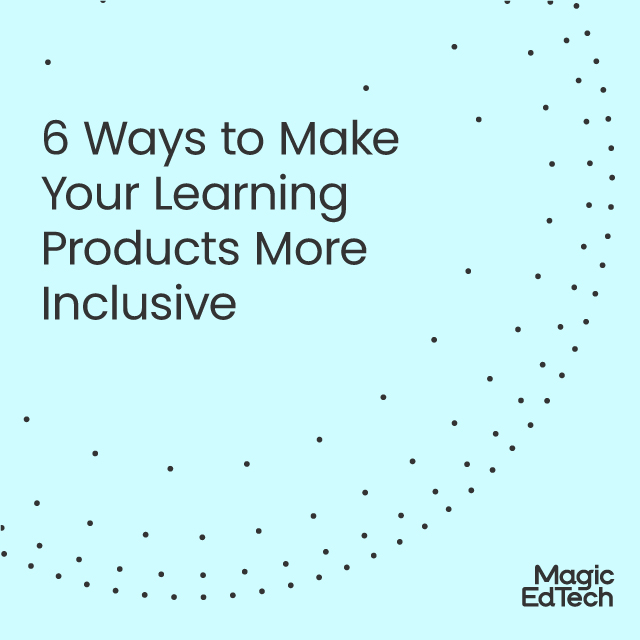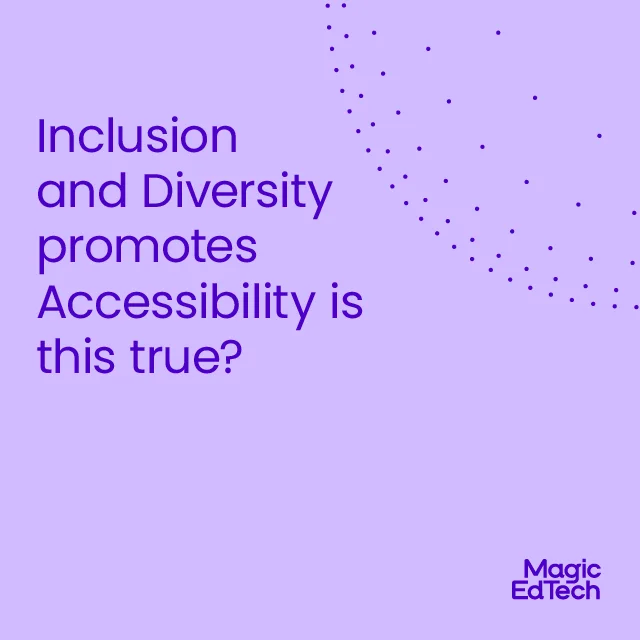Affirming the value of an inclusive environment for learners with invisible disabilities.
- 12 August, 2022
- Reading Time: 3 minutes
Not all disabilities are visible.
Many people believe that the term “disability” refers only to people with a visible disability such as an individual who uses a wheelchair or wears hearing aids. However, that is far from the truth. Many disabilities are invisible and there’s much more to them than meets the eye.
What are Invisible Disabilities?
The Invisible Disabilities Association (IDA) defines invisible disabilities as a “physical, mental, or neurological condition that is not visible from the outside, yet can limit or challenge a person’s movements, senses, or activities.”
Invisible disabilities necessitate a different perspective on disability, one that is not limited to a definition based solely on a person’s outward appearance.
The pertinence of addressing invisible disabilities in learning.
The US Census Bureau reports that 96%of all chronic illnesses are invisible. Approximately 10% of Americans have a medical condition that could be regarded as an invisible disability. Invisible disabilities can include chronic illness, dyslexia, ADHD, Autism Spectrum Disorder, anxiety, diabetes, epilepsy, food allergies, multiple sclerosis, personality disorders, hearing impairments, visual impairments, and rheumatoid arthritis. This list is not exhaustive or complete but serves to illustrate the diversity of invisible disabilities.
As you may know, the Web Content Accessibility Guidelines (WCAG) include consideration for cognitive disabilities to ensure invisible disabilities are factored in while developing learning products or platforms. These guidelines help ensure inclusion for all. Current statistics indicate that cognitive disabilities are the most common and least understood invisible disability.
The implications of invisible disabilities on learners.
Invisible disabilities can greatly affect the lives of people who have them, although they may not be apparent at first glance. Many people who live with an invisible disability work, participate in hobbies, and play sports; however, others struggle to make it through the work day or are unable to work at all as a result. It is important to remember that you don’t have to see a disability for it to be present.
Here are three things to do to support those with invisible disabilities to create a more inclusive and accessible space.
Ensuring accessible, inclusive learning.
1. Generate awareness, stay informed, and remain sensitive to invisible disabilities
Educating yourself on invisible disabilities and keeping open lines of communication will promote awareness and sensitivity, as well as the knowledge to respond respectfully. Awareness and sensitivity are the keys to cultivating an environment that is welcoming and considerate of everyone’s needs.
2. Develop an accessibility-first approach for invisible disabilities
Develop, design, remediate, or audit any product platform or content to accommodate the needs of all individuals. Accessibility-first design means developing products and platforms from the ground up to be aligned to the needs of all users. To support and ensure compliance for invisible disabilities, WCAG 2.2 will soon cover the following success criteria:
The above guidelines will support inclusion even more than the current guidelines. Some best practices include predictable navigation techniques and simple page layouts we can ensure the same by following Universal Design Guidelines. To make the text more engaging, sentences should be easy to read, contain sufficient visual breaks, and make use of headings to emphasize the main points. The best way to achieve digital compliance is by adapting an accessible-first approach.
3. Developing a framework to address these through a top-down approach
Schools and employers can play a significant role in fostering an inclusive environment and improving performance by providing accommodations for little or no cost. Companies can reframe processes and policies to accommodate persons with invisible disabilities.
For example, an individual with a chronic illness might require break time or a flexible start time. Designing policies accordingly and exercising flexibility can provide support for people with invisible disabilities.
Living with an invisible disability presents its own set of difficulties, but having to deal with prejudice and lack of support only makes things more difficult. Designing for accessibility involves more than merely checking compliance boxes. It is our social and moral responsibility to make sure that the user experience fulfills the unique needs of users.
There are many things organizations can do to solve these problems, and we must make an effort to support individuals with invisible disabilities. Through accessibility consulting and remediation, we have the potential to overcome these gaps and build inclusivity with accessible-first design and deliver fully accessible digital material that is user-friendly for all. With a combination of awareness, understanding, and continued education, we can broaden our view on disability and break down the barriers.






